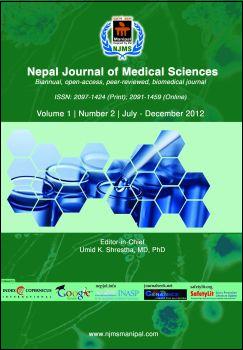Cleidocranial dysplasia: a case report of a rare anomaly
DOI:
https://doi.org/10.3126/njms.v1i2.6615Keywords:
Autosomal dominant, cleidocranial dysplasia, dysostosisAbstract
Cleidocranial dysplasia (CCD) is a rare hereditary disease of unknown etiology which was previously known as cleidocranial dysotosis. It usually follows an autosomal dominant mode of transmission. The phenotype is characterized by general dysplastic bone formation manifested by abnormalities in the shoulder girdle, skull, jaw and dentition. We report a case of a six year old female child presenting with classical features of CCD. An outstanding feature of this case is that it did not follow a familial pattern of inheritance since the patient is the only member in the family suffering from such disorder. The clinician should be aware of the characteristic features of CCD for early diagnosis and initiating the appropriate treatment. The clinical, radiological findings and its embryological cause are discussed.
DOI: http://dx.doi.org/10.3126/njms.v1i2.6615
Nepal Journal of Medical Sciences. 2012;1(2): 135-7
Downloads
Downloads
Published
How to Cite
Issue
Section
License
Copyright © by Nepal Journal of Medical Sciences. The ideas and opinions expressed by authors of articles summarized, quoted, or published in full text in this Journal represents only opinions of authors and do not necessarily reflect the official policy of Nepal Journal of Medical Sciences or the institute with which the author(s) is (are) affiliated, unless so specified.




